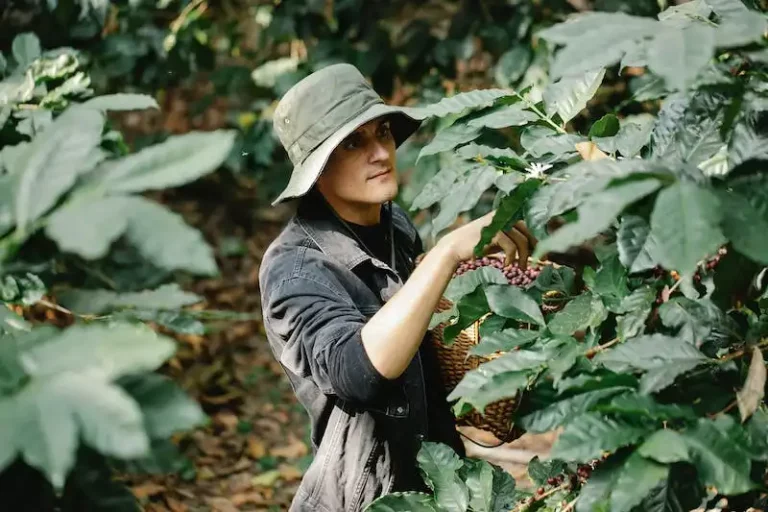When it comes to leafy greens, there are a wide variety of options available. Two popular choices in many regions of the world are Pak Choy and Bok Choy. Although they may seem similar, there are key differences between them in terms of their names, definitions, origins, and uses.
Pak Choy, also referred to as Bok Choy, is mainly grown and consumed in Chinese and Asian cuisines. In fact, the term “Bok Choy” literally translates to “white vegetable” in Chinese. It is known for its distinct leaf texture, which is crisp and tender. Pak Choy leaves are usually consumed in salads, stir-fries, or sandwiches, and they bring a unique flavor and crunch to dishes.
Bok Choy, on the other hand, is a variation of Pak Choy that is mostly popular in North America, Australia, and other parts of the world. The main difference between Bok Choy and Pak Choy lies in the size and shape of their leaves. Bok Choy has broad, dark green leaves with thick white stems, while Pak Choy has smaller, more slender leaves. Both varieties contain high levels of vitamins and calcium, which are essential for a healthy diet.
In terms of taste, Pak Choy has a mild, slightly sweet flavor, whereas Bok Choy has a more cabbage-like taste. Both vegetables can be easily prepared and cooked, making them versatile ingredients in various dishes. Additionally, they are both low in calories and cholesterol, making them excellent choices for those looking to maintain a healthy diet.
In conclusion, while Pak Choy and Bok Choy share similarities in some areas, they also have notable differences in terms of their origins, names, and uses. Whether you prefer the crisp texture of Pak Choy or the cabbage-like taste of Bok Choy, both vegetables offer a wide range of health benefits and can be enjoyed in a variety of recipes.
Pak Choy or Bok Choy
Pak Choy and Bok Choy, both known as Chinese cabbage, are leafy vegetables that belong to the brassica family. They are widely used in Asian cuisine and have gained popularity in various regions of the world due to their nutritional benefits and unique flavors.
The key difference between Pak Choy and Bok Choy lies in their names. “Pak Choy” is the Chinese term for the vegetable, while “Bok Choy” is the Cantonese term. Although these names are used interchangeably, there are some slight differences in their appearances and tastes.
Pak Choy, also known as Brassica rapa chinensis, usually has thicker, more succulent stems and darker green leaves. On the other hand, Bok Choy, also known as Brassica rapa chinensis, has lighter green leaves and more tender stems. The texture of Pak Choy is somewhat crunchy, whereas Bok Choy has a slightly more delicate texture.
In terms of taste, Pak Choy has a mild, earthy flavor with a hint of bitterness. Bok Choy, on the other hand, has a milder flavor and is often described as slightly sweet and mustardy.
Both Pak Choy and Bok Choy are rich in vitamins A, C, and K, as well as calcium. They are low in calories and cholesterol, making them an excellent choice for those looking to maintain a healthy diet. Furthermore, they can be prepared in various ways, such as stir-frying, steaming, or adding to soups and salads.
In conclusion, while Pak Choy and Bok Choy are similar in many ways, they do have slight differences in terms of appearance, texture, and taste. Whether you prefer the crunchy texture of Pak Choy or the more delicate flavor of Bok Choy, both vegetables offer a nutritious addition to your meals. So, the next time you come across these leafy greens in your local grocery store or Asian market, you’ll know the key differences between Pak Choy and Bok Choy.
Difference Between Pak Choy and Bok Choy
In the context of this article, we will discuss the differences between Pak Choy and Bok Choy. These two vegetables are often referred to interchangeably, but they do have some distinct characteristics.
| Pak Choy | Bok Choy |
|---|---|
| Pak Choy, scientifically known as Brassica chinensis, is mainly grown in China and other Asian regions. It is also sometimes called “Chinese cabbage.” | Bok Choy, also known as Brassica rapa chinensis, is grown in a wide range of areas all over the world, including China, Australia, and the United States. It is commonly used in Asian cuisine. |
| Pak Choy has dark green leaves that are wide and have a smooth texture. They are mostly used in stir-fries, soups, or salads. | Bok Choy has both dark green leaves and white stalks. The leaves have a more mustardy taste and the stalks are crispy when cooked. It is commonly used in stir-fries and soups. |
| Pak Choy contains high amounts of vitamins A, C, and K, calcium, and fiber. It is also low in calories and cholesterol. | Bok Choy is rich in vitamins A, C, and K, as well as calcium and fiber. It is also low in calories and cholesterol. |
In conclusion, while Pak Choy and Bok Choy have some similarities in terms of their nutritional profile and culinary uses, there are also differences in their appearance, taste, and geographical origins. It is important to know these differences when preparing or cooking with either choi.
Pak Choi Vs Bok Choy
In terms of their definition, Pak Choi and Bok Choy are both leafy green vegetables. They come from the same species called Brassica chinensis, which is also referred to as Chinese cabbage. They are mainly used in Chinese cuisine but have gained popularity all over the world.
The key difference between Pak Choi and Bok Choy lies in their names. “Pak Choi” is the Cantonese name for this vegetable, while “Bok Choy” is the name used by the Americans. However, both names are used interchangeably and refer to the same vegetable.
When it comes to their differences, Pak Choi and Bok Choy have some variations in terms of their appearance, taste, and where they are commonly grown.
Pak Choi has wide leaves that form a cluster at the top, whereas Bok Choy has broader and rounder leaves that grow in a more upright manner. The texture of Pak Choi leaves is more tender and delicate, while Bok Choy leaves have a slightly thicker and crunchier texture.
In terms of taste, Pak Choi has a mild and slightly sweet flavor, whereas Bok Choy has a stronger and more mustardy taste. This makes Pak Choi a popular choice for salads and sandwiches, while Bok Choy is commonly used in stir-fries, soups, and coleslaw.
Another difference between the two vegetables is their growing regions. Pak Choi is mostly grown in Asia, especially in China and South Korea. On the other hand, Bok Choy is widely grown in Australia, as well as in some parts of Europe and North America.
Furthermore, when it comes to their nutritional value, both Pak Choi and Bok Choy are considered highly nutritious. They are rich in vitamins and minerals, especially vitamin C and calcium. They are also low in calories and cholesterol, making them a healthy addition to any diet.
In conclusion, while Pak Choi and Bok Choy have some differences in terms of their appearance, taste, and growing regions, they share many similarities. Both vegetables are part of the Brassica chinensis species and are commonly used in Chinese cuisine. They are packed with vitamins and minerals and can be prepared in a variety of ways to bring out their unique flavors and textures.
Differences Between Pak Choi and Bok Choy
Pak choi and bok choy are two leafy green vegetables that are often confused with each other. While they are both members of the Brassica family, they have some key differences in terms of their growth, usage, and flavor profiles.
Pak choi, also known as “Chinese cabbage,” comes from the scientific name Brassica chinensis. The name “pak choi” literally translates to “white leafy vegetable” in Cantonese. This vegetable is commonly used in Asian cuisine, particularly in China and other Southeast Asian countries. It has thick, crisp stems and dark green leaves. Pak choi is known for its mild, slightly mustardy flavor, making it a popular ingredient in stir-fries, soups, and salads.
Bok choy, on the other hand, comes from the scientific name Brassica rapa subsp. chinensis. It is often referred to as “Chinese cabbage” as well. Bok choy has a more robust flavor compared to pak choi, with a mild bitterness. It has a thicker stem and a larger, broader leaf. Due to its more pronounced flavor, bok choy is commonly used in dishes that require a stronger taste, such as braised or steamed preparations. It can also be added to sandwiches, coleslaw, or used as a substitute for chard or mustard greens.
In terms of appearance, young pak choi and bok choy can look very similar, leading to confusion. However, as they mature, the differences become more apparent. Pak choi tends to stay compact and round, while bok choy can grow much larger and develop wider leaves. Additionally, pak choi tends to have a smoother texture, whereas bok choy leaves can be slightly crinkled.
Another key difference between the two vegetables is their geographical origins. Pak choi is native to China, whereas bok choy is believed to have originated in the Mediterranean region. Today, both vegetables are grown and consumed worldwide.
In conclusion, while pak choi and bok choy share some similarities due to their membership in the Brassica family, there are notable differences between them in terms of their taste, appearance, and geographic origins. Whether you prefer the milder flavor of pak choi or the more robust taste of bok choy, both vegetables are nutritious options that can bring a wide range of health benefits. They are low in calories, high in fiber, and packed with vitamins and minerals like calcium. So, whether you want to add some crunch to your salads or whip up a tasty stir-fry, pak choi and bok choy have got you covered!
What is the Difference Between Pak Choy and Bok Choy
Pak Choy and Bok Choy are both leafy green vegetables that belong to the Brassica rapa subspecies chinensis. They are often referred to as two different varieties of the same plant. However, there are some differences between them in terms of their names, tastes, and regions of origin.
The main difference between Pak Choy and Bok Choy is that Pak Choy is the Chinese version of the vegetable, whereas Bok Choy is the Americanized name for it. Despite the difference in names, they are actually the same vegetable with slight variations in appearance and taste.
One noticeable difference between the two is that Pak Choy has a narrower and more elongated leaf shape, whereas Bok Choy has broader and more rounded leaves. In terms of taste, Pak Choy has a mild and slightly mustardy flavor, while Bok Choy has a sweeter and more delicate taste.
Both Pak Choy and Bok Choy are commonly used in various cuisines around the world. They can be cooked in a variety of ways, including stir-frying, sautéing, steaming, or even raw in salads. In Chinese cuisine, they are often used in stir-fries, soups, and other traditional dishes.
In terms of nutritional content, Pak Choy and Bok Choy are quite similar. Both vegetables are low in calories and high in vitamins A, C, and K. They also contain minerals like calcium and potassium, which are essential for maintaining good health.
However, there are some differences in the nutrient profiles of Pak Choy and Bok Choy. Pak Choy contains higher amounts of calcium compared to Bok Choy, which makes it a good choice for individuals looking to increase their calcium intake. Additionally, Pak Choy has higher levels of beta-carotene, an antioxidant that is converted into vitamin A in the body.
Another difference between Pak Choy and Bok Choy is their geographical origins. Pak Choy is more common in Asian regions, especially China, whereas Bok Choy is popular in Western countries, including America and Australia.
In conclusion, the difference between Pak Choy and Bok Choy lies primarily in their names, tastes, and regions of origin. While they share many similarities and are used interchangeably in cooking, Pak Choy is the Chinese version and is often called the narrow or baby bok choy, whereas Bok Choy is the Americanized name for the vegetable. Whether it’s Pak Choy or Bok Choy that you bring home, both are nutritious and versatile greens that can be enjoyed in a wide range of dishes.



